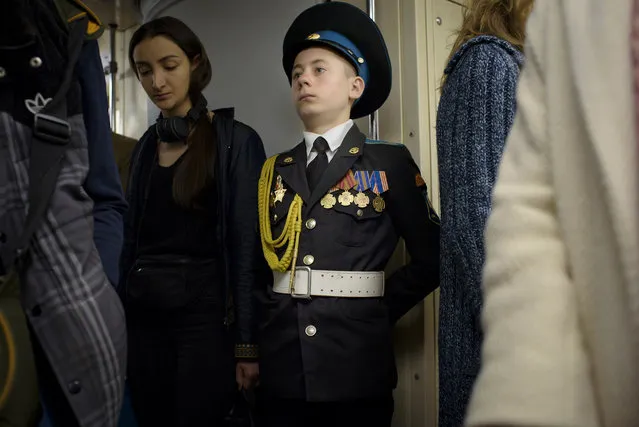
The metro of Moscow is undoubtedly one of the most beautiful in the world. In 1933, the greatest architects of the Soviet era left their mark on the cityscape by creating one of the most important cultural heritage sites in Russia. When Stalin and the Communist Party’s Central Committee, the Bolsheviks, launched the development, it became a symbol of architectural prowess that was unequaled in civil engineering at that time. The builders were honored, and the All-Union Leninist Young Communist League that led the construction received the Order of Lenin. The city’s makeup was inspired by the overwhelming feeling of patriotism that existed at that time. The worker’s union, with help from Joseph Stalin, built the most beautiful underground world, an empire of marble and stone palaces with royal aesthetics. The revolution and the defense of the motherland were two key ideas of the USSR and its socialist regime. These ideas were celebrated in mosaics and sculptures that appeared as early as when the line first opened on May 15, 1935. Here: A young schoolboy from a military school in a train of the subway. It is not unusual to see military costumes, the spirit of the military school appeared in Russia as early as the eighteenth century. Moscow, May 2017. (Photo by Didier Bizet/The Washington Post)
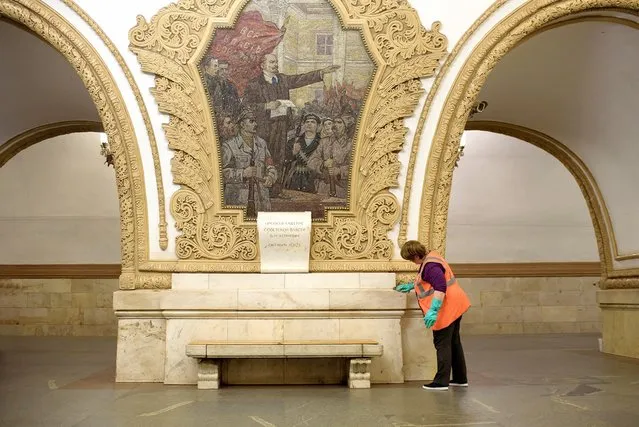
At the Kievskaya station, the marble is polished three times a day by cleaning crews. The station was opened in 1954. (Photo by Didier Bizet/The Washington Post)
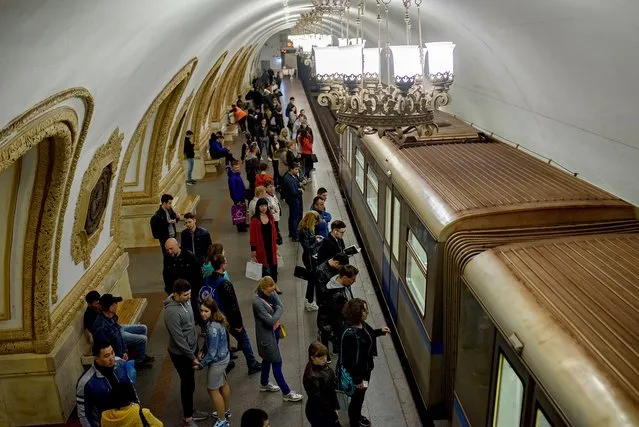
The metro, which was named after Vladimir Ilyich Lenin, was designed to showcase the biggest communist regime to the world. According to the Moscow transport department, the rail system has more than 8 million visitors a day – making it the busiest metro system in Europe. It also holds the world record for timekeeping. (Photo by Didier Bizet/The Washington Post)
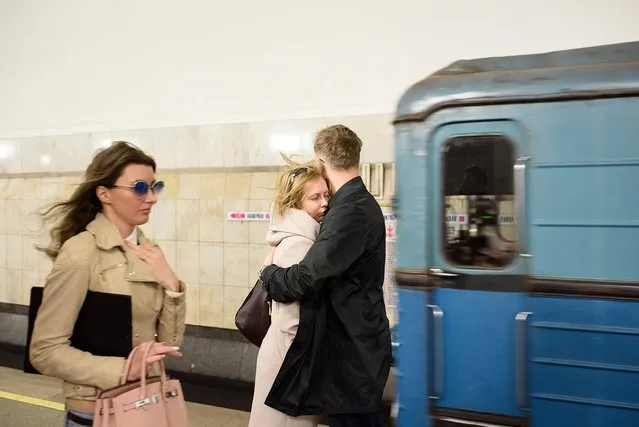
During peak hours, there is a train every 90 seconds, according to a representative of Moscow’s metro. (Photo by Didier Bizet/The Washington Post)

In the Teatralnaya station, Yuri plays a concerto. He had to audition to play in one of the 15 authorized stations. Each year, 200 people are selected out of 1,000 applicants, according to a representative of Moscow’s metro. (Photo by Didier Bizet/The Washington Post)
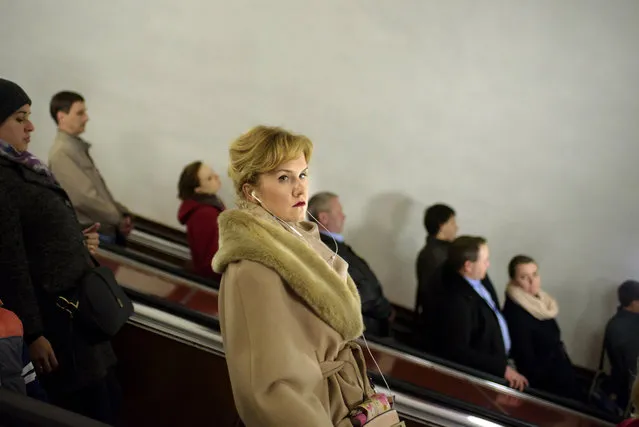
Loudspeakers in corridors and escalators regularly broadcast messages for people in stress or depression and offer free help. Suicides are most frequent in spring and autumn. Moscow May 2017. (Photo by Didier Bizet/The Washington Post)
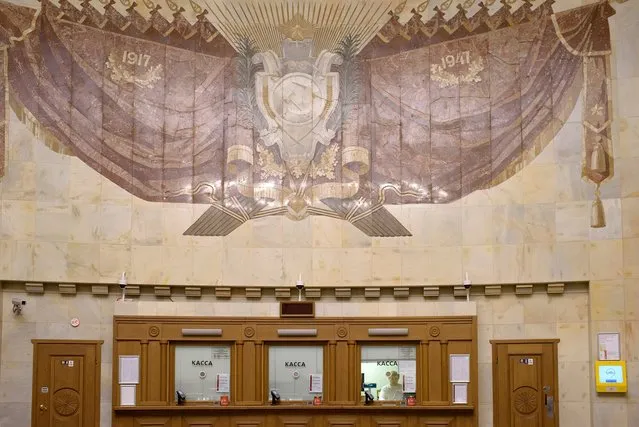
Irina Serpova works at the Plochtchad Revolioutsi station. Behind her window, she says, the station is quiet. Some 88,000 people work in 206 stations in total on 14 lines, according to a representative of Moscow’s metro. (Photo by Didier Bizet/The Washington Post)
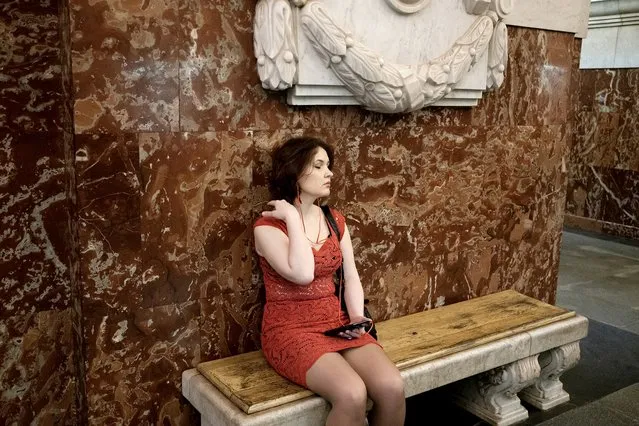
At the Krasnopresnenskaya station, the benches come from the Cathedral of Christ-Sauveur, which was built from 1839 to 1883 in memory of the victory of Russia against the army of Napoleon I. The cathedral was destroyed under Stalin in 1931, but the benches remained intact. Metro architects decided to install them in some stations. (Photo by Didier Bizet/The Washington Post)
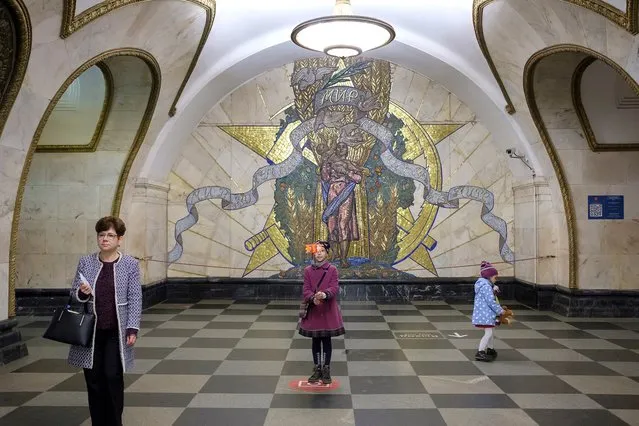
The Novoslobodskaya station on the circle has the distinction of being one of the favorite stations of Muscovites and tourists. It was opened in 1952 and symbolizes the greatness of socialism and the beauty of the Soviet homeland. (Photo by Didier Bizet/The Washington Post)
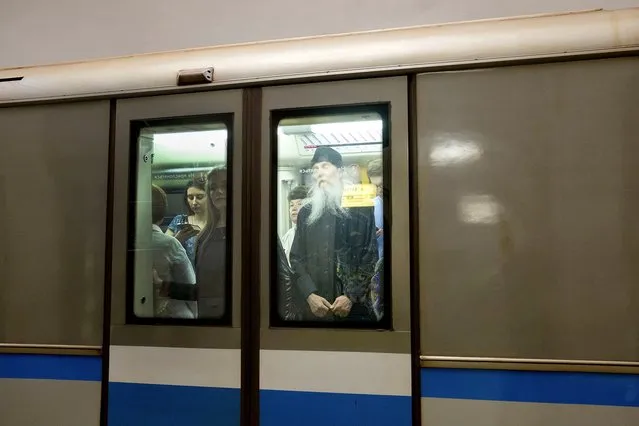
A priest seen through the window of a train. (Photo by Didier Bizet/The Washington Post)
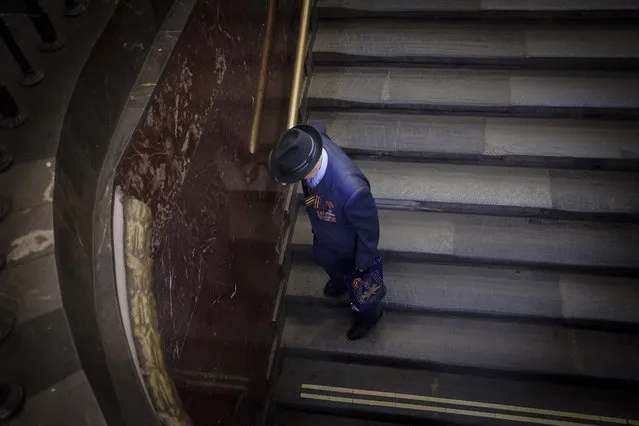
The station of Plotschad Revolutsyii is dark and austere, opened in 1938. After the May 9th commemoration, the elderly still carry the ribbon of St. George. Every year since 2005 on the eve of May 9, thousands of ribbons are distributed free on the streets of Moscow They refer to the Soviet medal «For the Victory over Germany in the Great Patriotic War 1941-45» and became a symbol Of patriotism aroused ostensibly. Station of Plotschad Revolutsyii. The red-brown marble lateral arches which surround the central vestibule are decorated at their base with seventy-six bronze sculptures installed in niches and symbolizing the people Russian builder of the new revolutionary world. Moscovites during their stay in the station touch some of the sculptures particlerly the dog's muzzles, Poeple says that it can bring happiness. Moscow, May 2017. (Photo by Didier Bizet/The Washington Post)
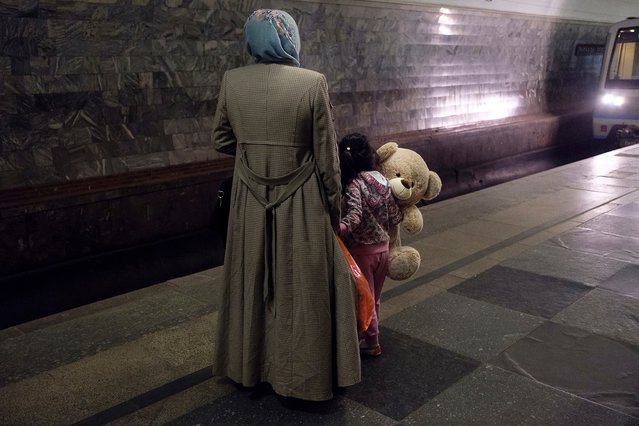
This palatial network is considered Moscow’s second urban attraction and allows visitors to step back in time to Soviet days. With its visually stunning design and passengers that seem to be from another age, no wonder it’s also a major source of inspiration for Russian cinema and theater. (Photo by Didier Bizet/The Washington Post)
24 Jan 2018 06:23:00,
post received
0 comments
